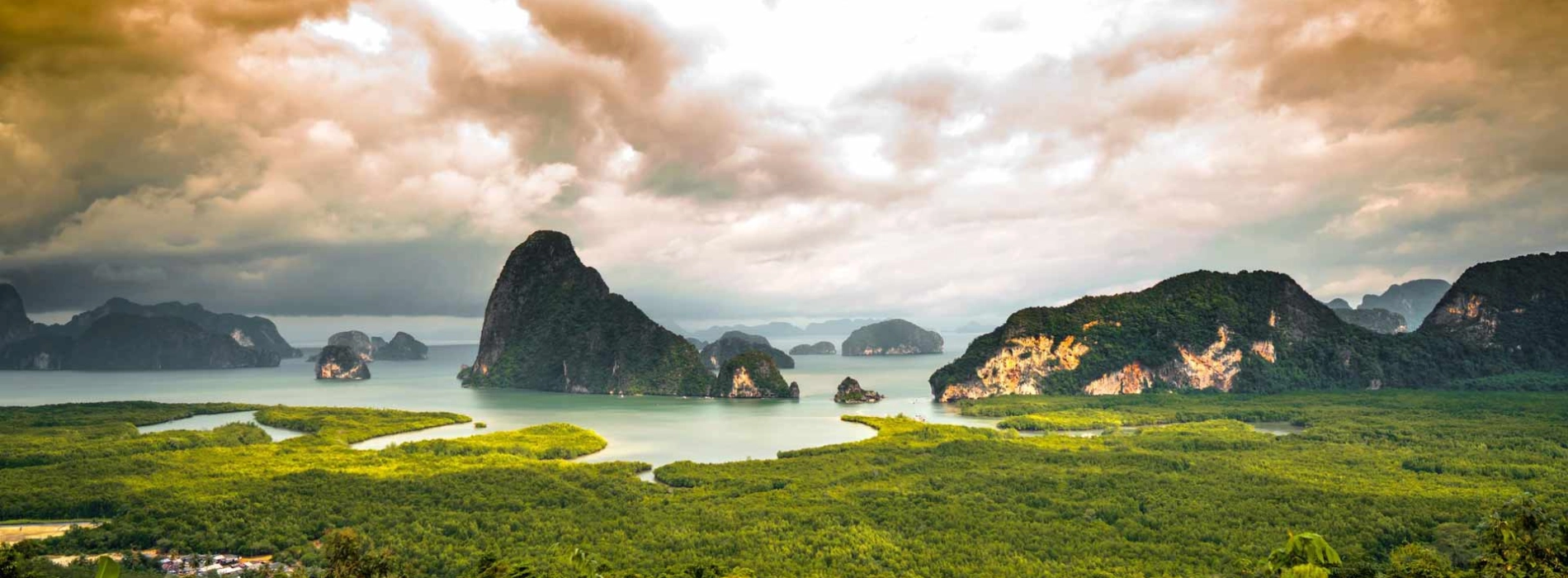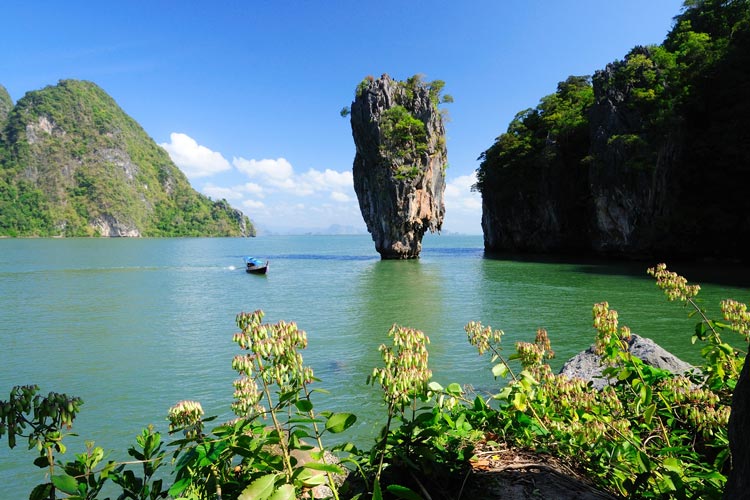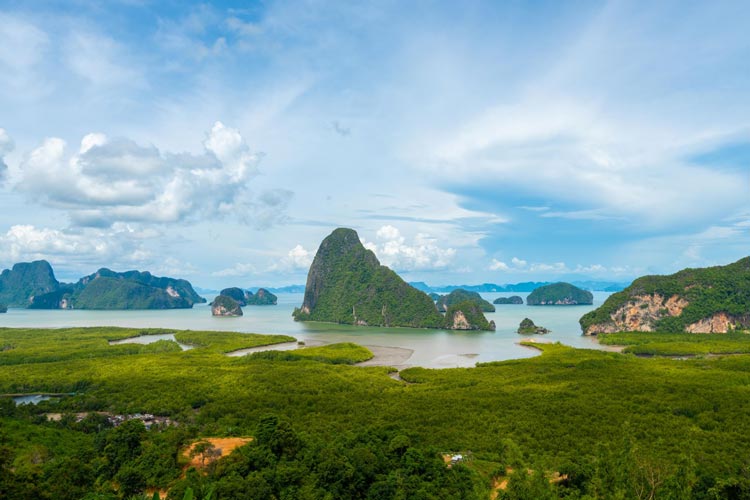Phang Nga

Tucked away in the Andaman Sea between the island of Phuket and the Malay Peninsula's mainland, Phang Nga is a breathtaking work of art. The striking limestone karsts that rise vertically from the emerald-green waters and are covered in lush flora to produce an awe-inspiring vista are among its distinguishing characteristics. Through a cinematic perspective, James Bond Island, with its famous rocky peak, earned international prominence. By boat or kayak, the bay opens up a world of secret tidal lagoons and sea caves.
Within its aquatic environments, rich biodiversity flourishes, home to a variety of fish, birds, and elegant sea eagles. Popular boat trips provide views of the bay's marvels, such as the well-known James Bond Island, but kayaking offers a closer look at its mysteries. The entrance, Phang Nga Town, offers cultural aspects in addition to its breathtaking natural beauty. The Ao Phang Nga National Park highlights the region's conservation efforts by safeguarding the exceptional beauty and natural balance of this treasured Thai jewel. Phang Nga is essentially a monument to the artistic ability of nature, bringing visitors looking for unmatched natural wonders in the center of Thailand.
The Phuket city of Thalang was under occupation during the war with Myanmar in 1809, when it was founded under King Rama II. Phang Nga became a city as residents were forced to relocate to the Phang Nga area for defense since that time. Takuapa combined with Phang Nga in 1931. In 2004, the Indian Ocean tsunami badly damaged Phang Nga, resulting in hundreds of fatalities, including the grandson of the Thai king and Bhuni Jensen. But as of right now, Phang Nga has undergone reconstruction and developed into a popular tourist attraction.

The stunning emerald-green waters, and picturesque landscapes
Phang Nga, located in southern Thailand, experiences a tropical climate with distinct wet and dry seasons. The weather is influenced by the monsoon winds, which bring variations in temperature and precipitation.
Dry Season (November to April): This period is considered the high tourist season due to more favorable weather conditions. From November to February, temperatures are relatively cooler, ranging from 23 to 31 degrees Celsius. March and April are warmer, with temperatures reaching higher averages. Rainfall is minimal during the dry season, making it an ideal time for outdoor activities and exploring the bay.
Wet Season (May to October): The wet season is characterized by the southwest monsoon, bringing higher humidity and more rainfall. May to October sees increased rainfall, with the peak occurring from June to September. Temperatures remain warm, ranging from 24 to 32 degrees Celsius. The wet season can bring occasional heavy rain and thunderstorms, affecting boat tours and water-based activities

Beautiful scenery from Phang Nga viewpoint
Boat Tours: The most popular way to explore Phang Nga is through organized boat tours. These tours typically depart from nearby areas such as Phuket, Krabi, or Ao Nang. Various types of boats, from long-tail boats to speedboats and traditional Thai boats, are used for these tours. Boat tours often include visits to James Bond Island, sea caves, hongs, and other scenic spots.
Kayaking: Kayaking is a popular activity in Phang Nga, allowing visitors to explore sea caves, hongs, and hidden lagoons. Many tours include kayaking as part of the overall experience.
Private Charters: For a more personalized experience, you can consider chartering a private boat. This option allows you to customize your itinerary and explore at your own pace.
Ferries and Speedboats: If you are staying on nearby islands or in towns like Phuket or Krabi, you can often find scheduled ferry services or speedboat transfers to reach specific islands or areas within Phang Nga.
Self-Drive or Guided Tours: If you prefer land-based exploration, you can rent a car or hire a guide to take you to viewpoints or attractions on the mainland near Phang Nga. This can be a good option if you want to explore local markets, temples, or cultural sites.
Read more at: Check-in top 7 most wonderfull beaches in Thailand.
Embark on an unforgettable Khao Lak Tour 2 Days that includes breathtaking views...
Embark on an unforgettable "Khao Lak Tour 3 Days 2 Nights" and immerse yourself...
Experience the best of nature with our "Khao Lak Tour 4 Days 3 Nights" adventure...
Discover the enchanting beauty of Thailand with our Phuket Phang Nga Tour 3 Days...
Dive into Similan Islands Tour 2 Days with thrilling dives, pristine beaches, an...
Explore the Similan Islands Tour 3 days with snorkeling, beach relaxation, and a...
Embark on Phang Nga Bay Tour 2 Days, explore hidden gems like Sarasin Bridge, Sm...
Embark on Surin Island, explore vibrant coral reefs, relax on Mai Ngam beach, an...
Immerse yourself in Surin Island Tour 3 Days with snorkeling, exploring coral re...